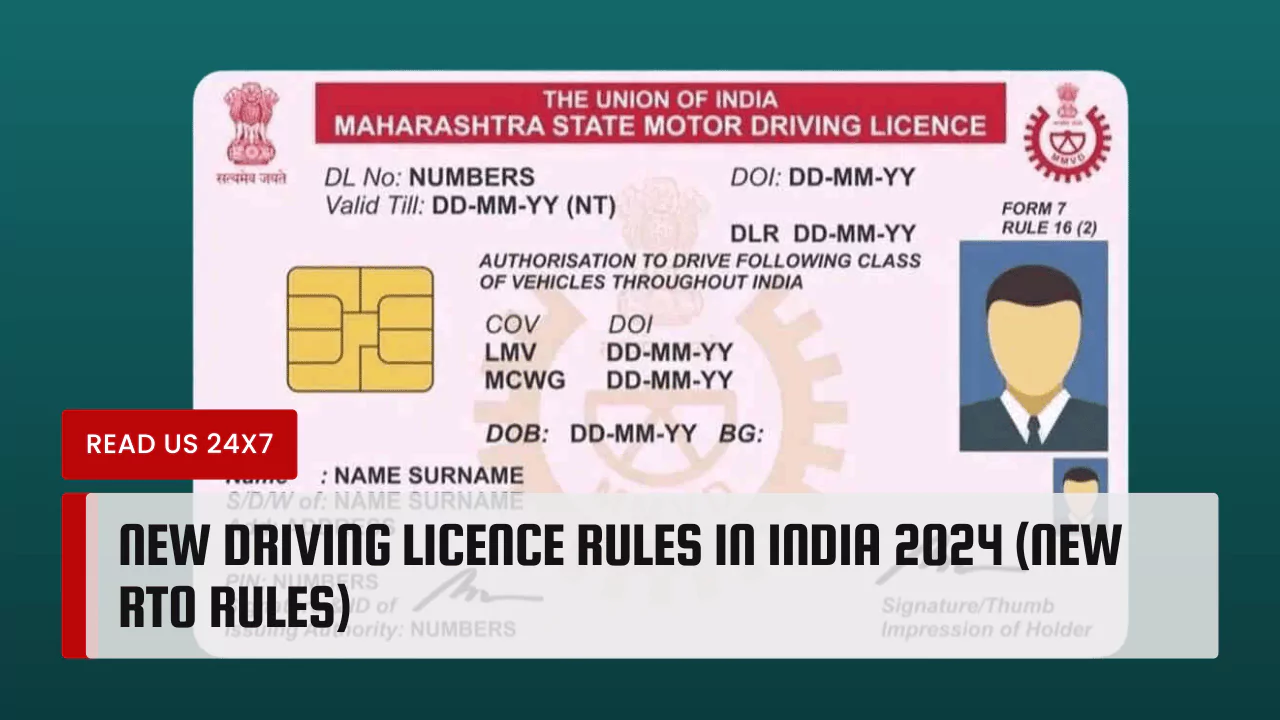In July 2024, India is expected to introduce a number of changes to its driving license rules. These changes include increasing the validity of a license from 15 years to 20 years and allowing extensions for senior citizens who continue to drive.
There is no need to visit RTOs for the license from June 1, 2024.
Additionally, strict driving school guidelines, compulsory vehicle insurance for all motorists, and breathalyzer and fitness tests for license renewal are likely to be introduced. These measures are aimed at improving road safety and making Indian drivers more responsible.
Overview of Updated Driving License Regulations in India
Elimination of In-Person Driving Tests at RTO
One major change is the elimination of in-person driving tests at Regional Transportation Offices (RTOs). Previously, obtaining a license necessitated passing a driving test, often leading to long queues and delays. However, under the new rules, this requirement has been abolished, offering significant relief to applicants.
Mandatory Retirement of Older Vehicles
Another crucial aspect of the updated regulations is the mandatory retirement of older vehicles. This measure aims to modernize the vehicle fleet, promoting road safety and environmental sustainability. By phasing out older vehicles, the government seeks to reduce accidents and emissions on Indian roads.
Highlights of New Driving Licence Rules
| Department | Union Ministry of Roads and Motorways |
|---|---|
| Body Name | Regional Transportation Office (RTO) |
| Rules Changes for | 2 Wheeler and 4 Wheelers |
| Rules Changed | Driving Test |
| New Rules Effect Date | June 1, 2024 |
| Official Website | parivahan.gov.in |
Steps to Acquire a Driving License Under New Guidelines
Bypassing the Traditional RTO Test
Under the new guidelines, individuals seeking a driving license can bypass the traditional RTO test by enrolling in recognized driver training centers. These centers are authorized to issue licenses to qualified candidates upon successful completion of training, eliminating the need for a driving test.
Implementing Digital Tools in Licensing Procedures
Furthermore, the implementation of digital tools in licensing procedures simplifies the application process. Applicants can now complete the entire process online, reducing the need to visit RTOs in person. This digitization initiative aims to enhance efficiency and convenience for license applicants.
Significance of Adherence to New Regulations
Adherence to the new regulations is paramount for both aspiring drivers and existing license holders. By complying with the updated guidelines, individuals contribute to safer roadways and smoother traffic operations. Additionally, staying informed about the latest rules ensures compliance with legal requirements.
Effects of Revised Licensing Rules on Drivers
Simplified Licensing Process
One of the immediate benefits of the revised licensing rules is a simplified application process. With the elimination of driving tests and the introduction of online procedures, acquiring a driving license has become more accessible and efficient for applicants.
Promotion of Safer Driving Practices
Moreover, the emphasis on training and education through recognized driver training centers promotes safer driving practices among license holders. By receiving proper instruction, drivers are better equipped to handle vehicles responsibly, reducing the risk of accidents on the road.
System Enhancements and Updates
The implementation of the new regulations also involves system enhancements and updates to accommodate the changes. From digital infrastructure improvements to training program standards, these enhancements aim to ensure the effectiveness and reliability of the licensing system.
In conclusion, the introduction of new driving license rules in India in 2024 marks a significant step towards modernizing the licensing process and enhancing road safety. By streamlining procedures, promoting training, and embracing digitalization, these regulations aim to create a safer and more efficient driving environment for all.



